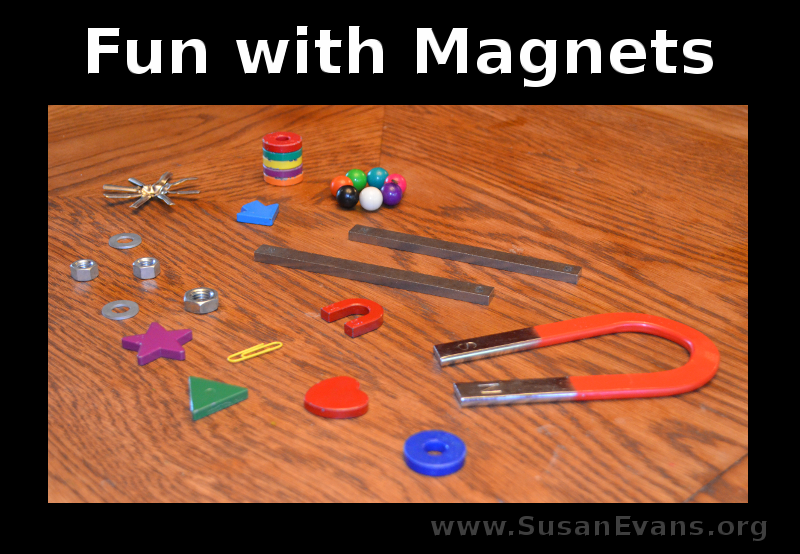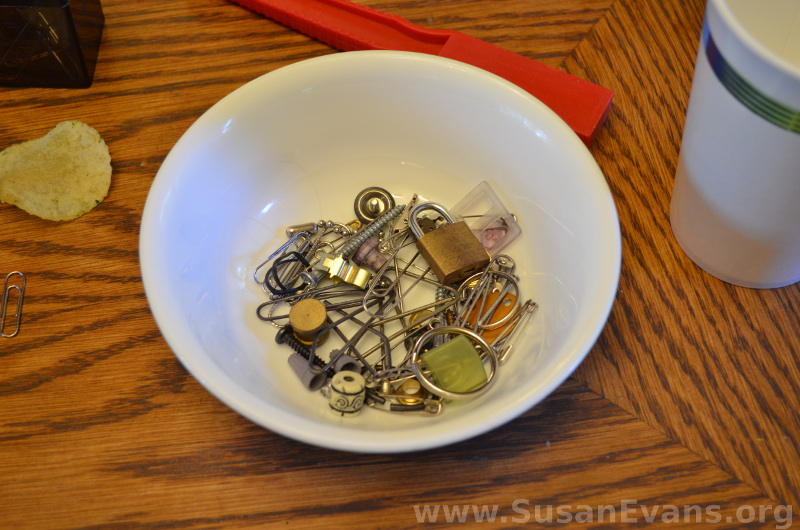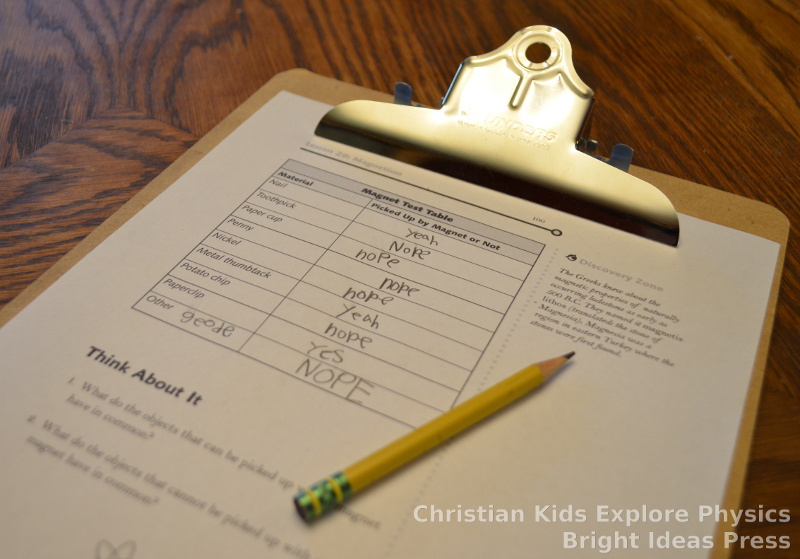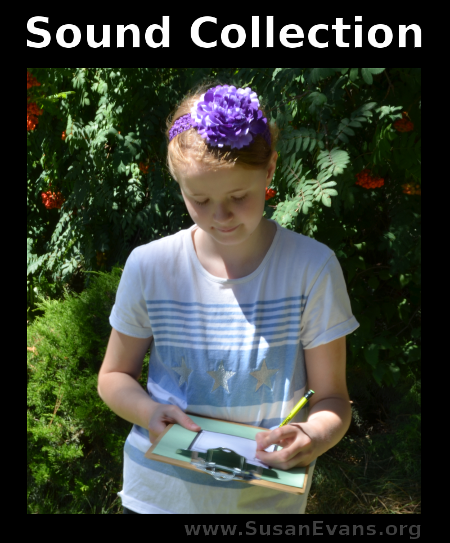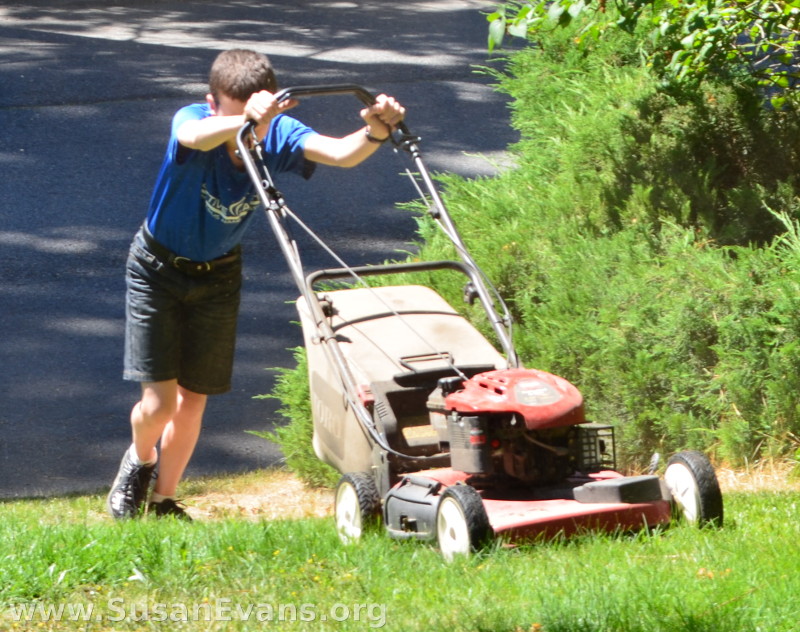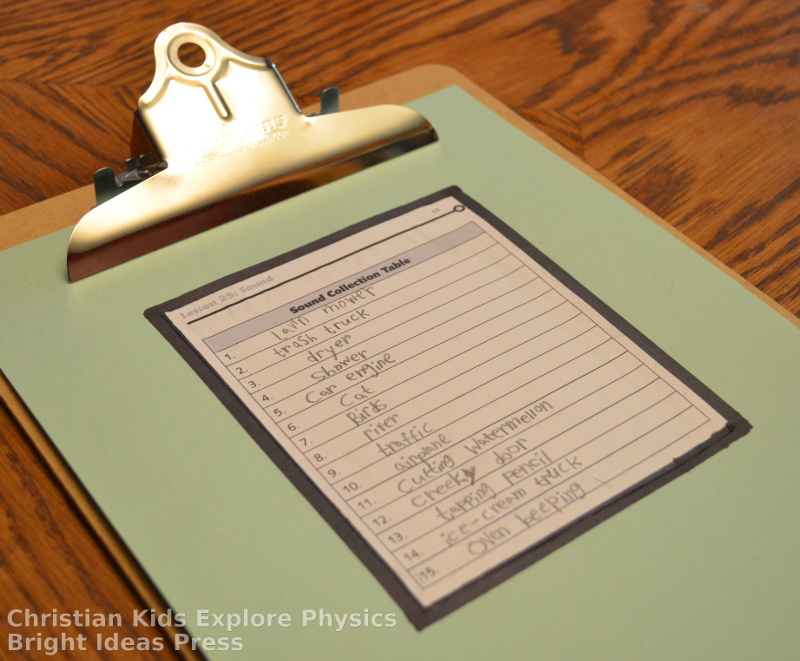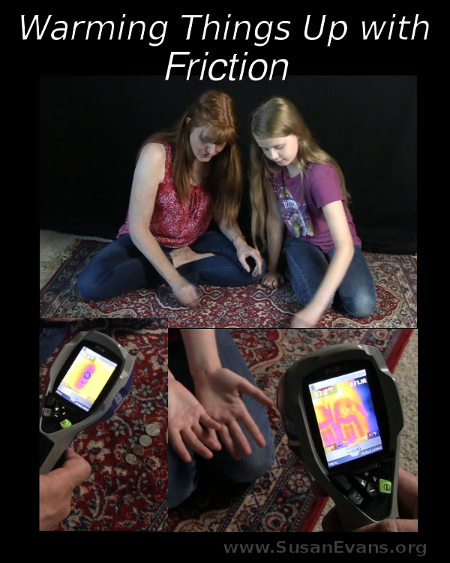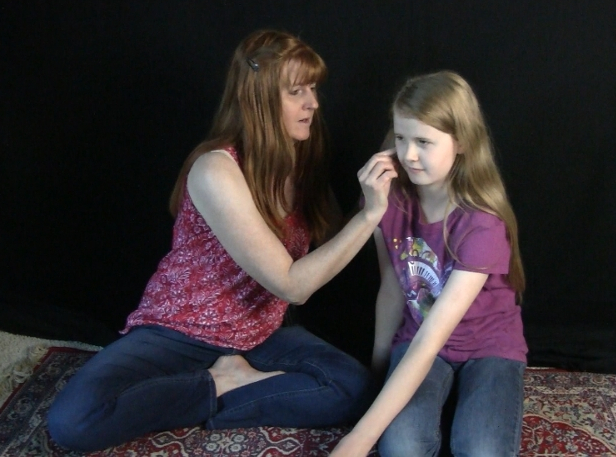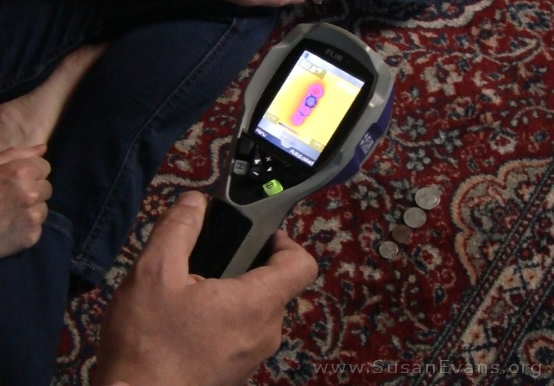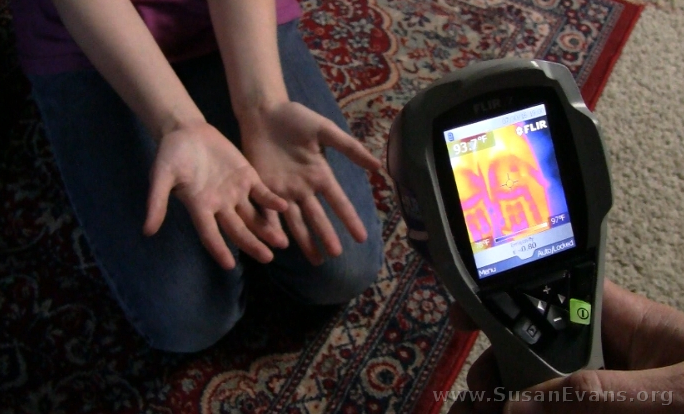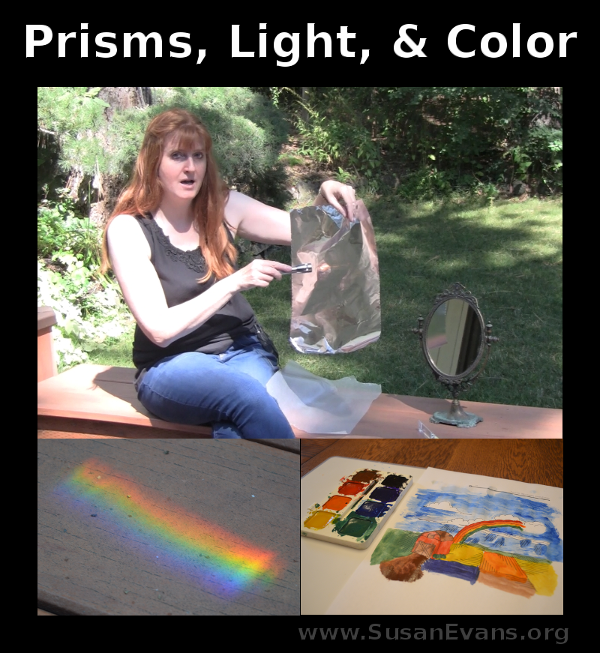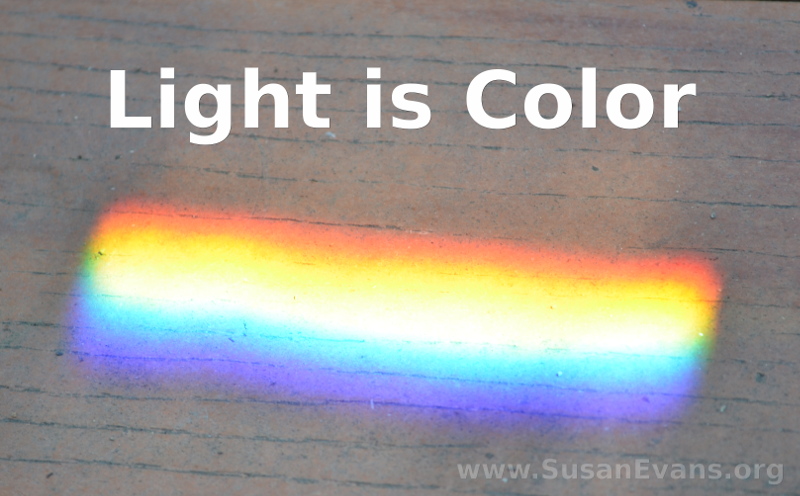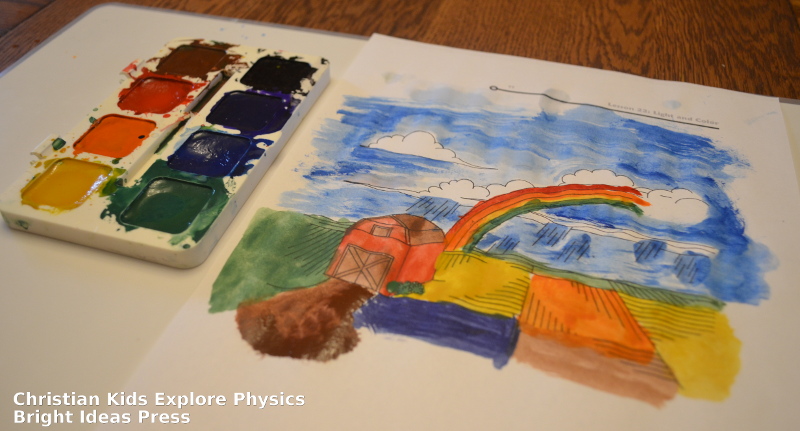Today we will have fun with magnets! We will see various objects picked up by magnets, including strings of paper clips. Rocks and minerals will be explored, as to whether they are magnetic. We will also be playing with iron filings.
Magnets have a north and south pole. Opposite poles attract (north/south), and like poles repel or push away from each other (north/north or south/south).
Pull together some objects to see whether a magnet will pick them up. Some might surprise you, like coins seem like they ought to be picked up, but they don’t have enough metal in them to be attracted to a magnet!
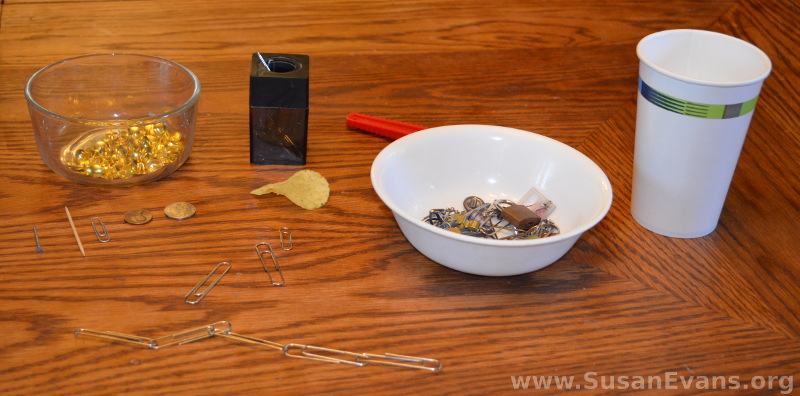 This post contains affiliate links. I was compensated for my work in writing this post.
This post contains affiliate links. I was compensated for my work in writing this post.
These are some of the objects that we attempted to pick up with the magnet: a nail, a toothpick, a paper cup, a penny, a nickel, brass thumb tacks, a paper clip, and a potato chip.
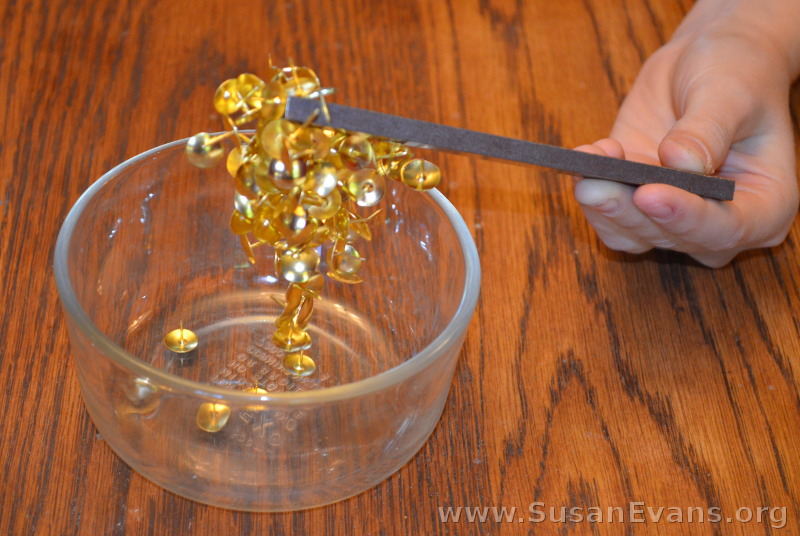
The brass thumb tacks were my favorite of the whole list of picked-up things because so many clung to the magnet! I also liked the fact that a long string of paper clips were picked up by a magnet as well.
Take a look at this experiment, which includes rocks and minerals and iron filings:
We dumped little odds and ends from a junk drawer into a bowl to see what we could pick up with a magnet. We noticed that the following things remained in the bowl and are therefore non-magnetic: plastic, wood, ceramic, buttons, and other synthetic items.
Here is the chart we filled in from Christian Kids Explore Physics by Bright Ideas Press. We were encouraged to think about why certain materials were picked up by a magnet and others not. Metal was the underlying reason why items were picked up because metal conducts electricity.
I hope you enjoyed all of our fun with magnets!
